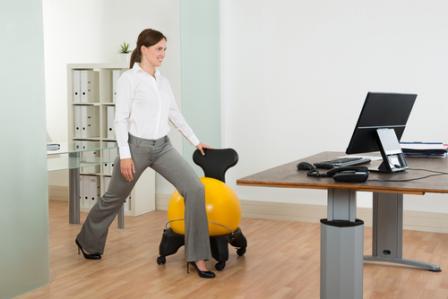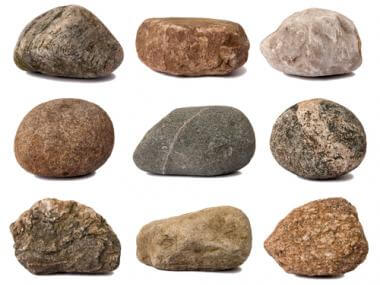8 Alternatives to Sitting at Your Desk
Here are eight ways to adopt a better position for your body.
A couple years ago, at the Ancestral Health Symposium, I presented a poster entitled Biohacking the Hazards of Sitting. As you can see in this video, I actually thought I was being quite witty to present a poster on the dangers of sitting while sitting with poor posture in a folding chair.
It’s actually been over five years since I’ve adopted the habit of frequently alternating positions throughout my work day, a strategy I highlight in detail my video How Should You Stand At a Standing Desk? and also in my podcast Standing Desks, Memory Foam, and the Science of Walking Barefoot in Shoes. My office is actually like a tiny playground, littered with kettlebells, a pull-up bar, a boxing heavy bag, this treadmill workstation, and a variety of standing surfaces, including my latest foot acupressure therapy invention, a Bulletproof Sleep Induction mat wrapped around a Kybounder mat.
It’s for the reasons I outline in the Get-Fit Guy episode, 7 Ways To Stand More, that I choose to alternate between so many different positions during the day, rather than just standing, which can get tiring and even put undue stress on the feet, ankles, hips and back if it’s your only position during the day. In today’s episode, without a particular order of importance, I’m going to give you the EIGHT most popular positions I adopt during a typical day of work.
1. Lunge
I’ll often fold up a towel or use a foam mat and simply lunge at a table or desk with one leg forward and one leg back. This is a great stretch for the hip flexor, and a position you can easily type or talk in. Rather than sitting, I also will often use this position during meetings that take place around a table.
2. Walk
Many folks think walking during work requires a treadmill in front of a standup desk. But you can pace while on the phone, walk outside while dictating notes or articles to yourself on a portable recorder, or walk on a treadmill while reading or catching up on conference calls that have been recorded. Be creative!
3. Kneel
Like lunging, kneeling is a perfect position for “getting down” to a standard table or desk height without actually sitting. Be sure not to slouch if you kneel, and instead kneel upright with the shoulders slightly squeezed back and head and neck tall. You’ll also want a towel or mat for this position.
4. Sit on Floor
Rather than sitting at a table, I’ll often spread out on the floor to eat lunch, work on my laptop, or converse with someone. When you sit on the floor, you’re forced to engage in more hip and hamstring mobility than sitting in a chair. Just try to go one day without sitting in a chair and notice how much your body has to “work”!
5. Balance Board
Many companies now make special balance boards, which are basically a standing platform made of metal or wood that is balanced over a center fulcrum. If you google “Fluidstance,” you’ll see an example of the one I use. It’s not quite as hard as many balance challenging devices, so you can still focus on your work without worrying about falling on your face, but still makes the tiny muscles in your feet, knees, hips and core work just a little harder. Of course, it’s great for visual and vestibular balance too.
6. Foam Mat
Like a balance board, a foam mat can challenge your balance a bit, but also offers a more forgiving surface for your feet and calves than hard wood, carpet or other standard flooring material. If you have a foam mat, it can double as your surface for lunging and kneeling too! In this video, you can see the foam mat that I use.
7. Topographical Mat
Have you ever seen a “mat” made out of tiny river rocks? It’s just what it sounds like: a wide variety of small objects on a mat surface that force your feet muscles to shift and work, while also stretching precious ligaments and tendons in your feet. As I mentioned in this podcast episode on standing versus sitting, my sons and I are in the process of making one this month! Some companies, such as “TopoMat” now make mats with a wide variety of angles and surfaces that work similarly, and recently I posted this image on Instagram of a creative way I pieced together my own topographical mat (that doubles as foot “therapy” using an acupressure blanket and a foam mat!
8. Stand
In my podcast interview with Jeff Wilser, the author of The Good News About What’s Bad for You…The Bad News About What’s Good for You, we discuss how standing all day long can often put you into poor posture, with locked out knees, beat up ankles, and blood pooling in your calves and lower extremities. That’s why I saved this one for last. However, standing is still a position I find myself in for a good three to five hours every day, and I typically intersperse the other seven positions you’ve discovered in this article in between my standing sessions.
So that’s it. Which of these have you tried? Do you have more questions about these eight alternatives to standing at your desk, or your own to add? Join the conversation at Facebook.com/getfitguy.







